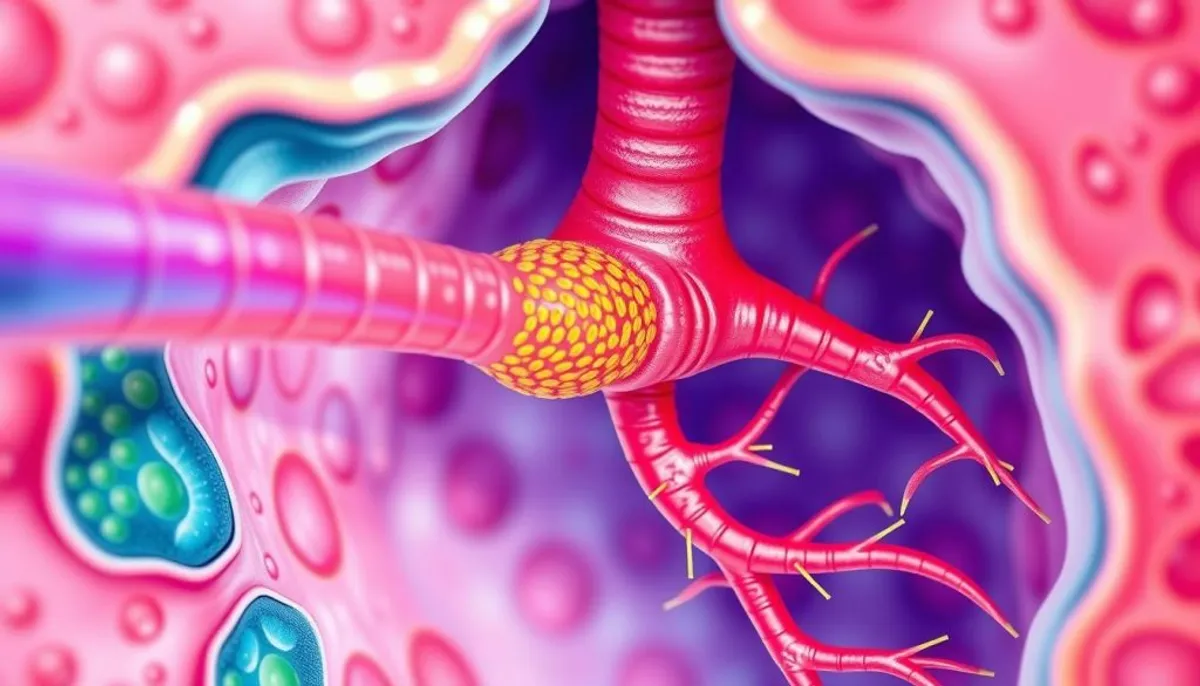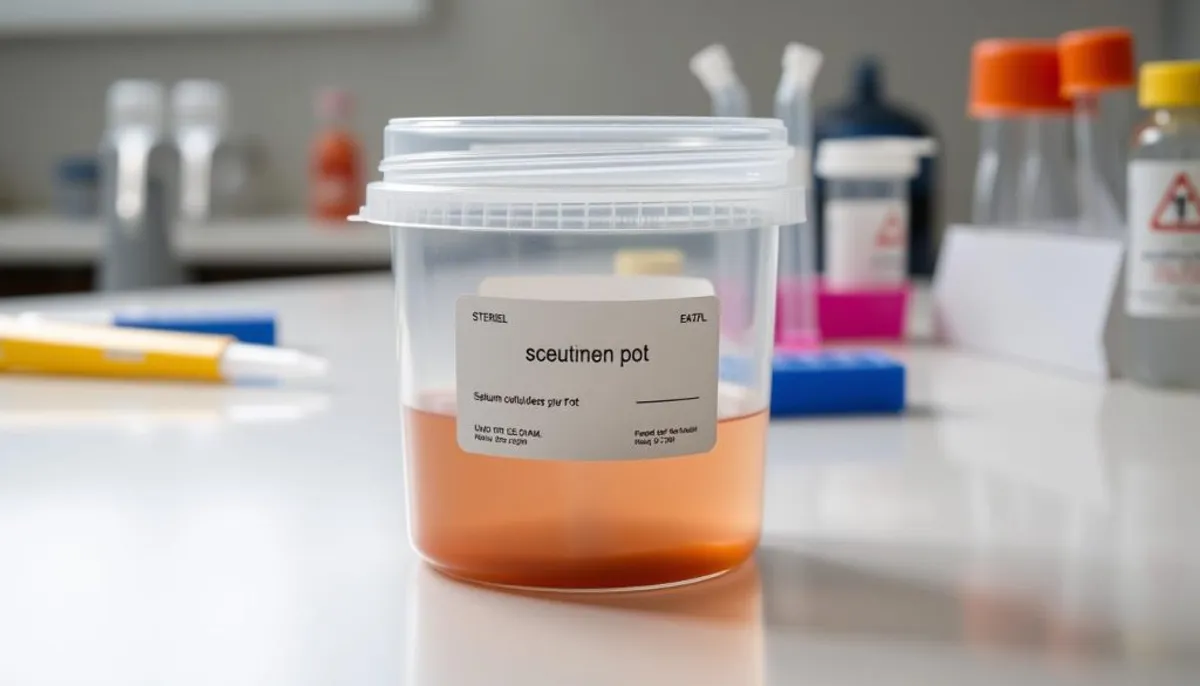The sputum culture is a medical specimen fundamental for pulmonary diagnosis. This guide walks you through the steps to perform a sputum analysis, from collection to sending it to the laboratory.
The cytobacteriological examination of sputum (ECBC) plays a crucial role in detecting respiratory infections. It allows for the identification of bacteria and their quantity, thus facilitating the choice of treatment.

The quality of the specimen is essential. Healthcare professionals examine the color, odor, and appearance of the secretions. They also check the types of cells to ensure that the sample comes from the lower respiratory tract.
In immunocompromised patients or those with cystic fibrosis, bacteria such as Pseudomonas aeruginosa are more common. Tuberculosis, on the other hand, requires analysis over three consecutive days to detect the Koch bacillus, highlighting the importance of community and solidarity in supporting healthcare.
Understanding Sputum: Definition and Medical Importance
Sputum is essential in diagnosing respiratory infections. These secretions, originating from the lower respiratory tract, reveal crucial information about the health of our lungs. They are produced by a deep cough, distinct from mere saliva.
What is Sputum
Sputum is a secretion from the lower respiratory tract. It is expelled by a deep cough. The microbiological analysis of these secretions allows for the identification of pathogens responsible for pulmonary infections.
Difference Between Saliva and Sputum
Saliva is continuously produced by the salivary glands. Sputum, resulting from a productive cough, is different. This distinction is crucial for obtaining a valid sample during a cytobacteriological examination of sputum (ECBC).

Importance of the Specimen for Diagnosis
The ECBC is prescribed in specific cases, such as tuberculosis or atypical pulmonary infections. Commonly identified bacteria include Streptococcus pneumoniae and Haemophilus influenzae. Good sputum quality is essential for reliable results and accurate diagnosis.
This examination allows the doctor to choose the appropriate antibiotic treatment based on the antibiogram. However, interpretation can be tricky due to the presence of oral germs. Additional tests are sometimes necessary to confirm the diagnosis.
Necessary Equipment for Sputum Culture
To obtain reliable results, it is imperative to use appropriate equipment during sputum culture. Before proceeding with the specimen collection, it is essential to prepare the necessary items.
The Suitable Sterile Container
The choice of sterile container plays a determining role in the quality of the sample. It is advisable to opt for a hermetically sealed plastic container, specifically designed for sputum collection. This container must be sterile and large enough to hold 5 to 10 ml of secretions.

Required Hygiene Items
The importance of hygiene during specimen collection cannot be underestimated to avoid contamination. It is recommended to use sterile or mineral water for rinsing the mouth before sputum collection. Additionally, single-use tissues and a kidney basin are essential. In some cases, a nebulizer with a mouthpiece or mask may be necessary.
Necessary Documents and Labeling
Labeling the samples is crucial for their traceability. It is important to prepare labels with the following information:
- Patient's first and last name
- Date and time of collection
- Nature of the sample
For the search for mycobacteria, it is necessary to write “BK” on the lid of the container. Don’t forget to prepare the necessary documents for sending to the laboratory. This ensures prompt and accurate processing of your sample.
How to Perform a Sputum Culture
The collection technique is essential for obtaining a quality sample. To perform an effective sputum culture, follow these steps:
- Rinse your mouth with water to eliminate food residues.
- Induce a productive cough by taking a deep breath.
- Spit directly into the provided sterile container.
- Avoid contamination by saliva by aiming for the back of the throat.
To optimize the quality of the sample, it is recommended to collect it early in the morning. More than 80% of collections are made at this time. If you have difficulty producing sputum, a session of physiotherapy can help, especially in children and the elderly.
The color of the sputum can provide clues about your health status:
| Color | Possible Indication |
|---|---|
| Clear | No illness (unless in large quantities) |
| Gray or white | Potential lung disease |
| Green or dark yellow | Bacterial infection (e.g., pneumonia) |
| Brown | Smoking or black lung disease |
| Pink | Possible pulmonary edema |
Once the specimen is collected, it must be sent to the laboratory within 24 hours. Complete results may take up to seven weeks. This analysis helps identify the bacteria or fungi responsible for pulmonary infections and assess the effectiveness of treatments.
Sample Storage and Transport
The storage of samples and medical transport are crucial for obtaining accurate analysis results. It is essential to understand the key steps to maintain the quality of your sample.
Optimal Temperature Conditions
For optimal storage, the sample should be kept at room temperature (18-25°C) if transport to the laboratory is done within 2 hours. If this time is exceeded, it is recommended to refrigerate it between 2 and 8°C. This measure is particularly crucial for analyses such as the search for Chlamydia or Mycoplasma.
Maximum Storage Times
The analysis deadlines vary depending on the type of examination. For a standard sputum culture, processing must begin within 2 hours of collection. The maximum storage time is 24 hours under refrigeration. It is important to note that 100% of tests can be performed urgently if necessary.
Protocol for Sending to the Laboratory
Medical transport must be swift and follow the procedures established by the laboratory. To obtain France culture contacts, here is a summary of the recommendations:
| Type of Sample | Transport Time | Temperature |
|---|---|---|
| Standard sputum | < 2 hours | Room temperature |
| Sputum (time > 2h) | < 24 hours | 2-8°C |
| Search for mycobacteria | < 4 hours | 2-8°C |
Following these guidelines is essential to ensure the reliability of your analyses and facilitate the laboratory's work, especially when planning tourist circuits.
Conclusion
The sputum culture is fundamental for diagnosing respiratory infections. This method, while simple, requires meticulous attention. This ensures the quality of the specimen. A well-collected sample sent to the laboratory quickly is crucial for identifying pathogens.
Diagnosis is essential, especially for severe diseases like tuberculosis. In 2020, this disease caused about 1.5 million deaths. The sputum culture, capable of detecting 10 bacilli per milliliter, is vital for screening and medical follow-up.
By following the steps in this guide, from collection to sending to the laboratory, the reliability of the results is guaranteed. This rigor is crucial for the effectiveness of treatment. It improves the patient's chances of recovery. Thus, the quality of the specimen is a key element in treating respiratory infections.
RelatedRelated articles


